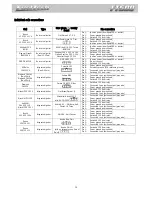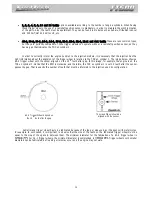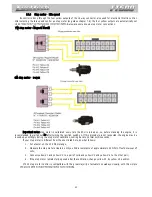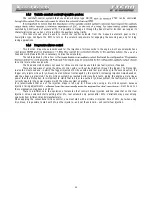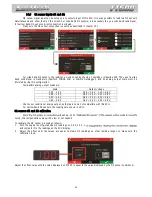
39
1, 2, 3, 4, 5, 8, 10 and 24 teeth: options available according to the number of engine cylinders. When having
these trigger wheels, the use of a camshaft position sensor is mandatory, in order to maintain the synchronization
of the parts. Also, the teeth must be equidistant. They can be found in models such as Subaru, Mitsubishi Lancer
and 3000GT, GM S10 Vortec V6, etc.
48-2, 30-2, 30-1, 24-2, 24-1, 15-2, 12-3, 12-2, 12-1, 12+1 and 4+1 teeth: These are less common types,
but they are perfectly compatible. These trigger wheels can operate without a camshaft position sensor, as they
have a gap that indicates the TDC on cylinder 1.
In order to correctly inform the engine position to the injection module, it is necessary that the injection has the
right information about the alignment of the trigger wheel in relation to the TDC on cylinder 1. The image below shows a
60-2 trigger wheel with the sensor aligned on the 15
th
tooth after gap. In this image, for example, the engine is on the
TDC on cylinder 1. Notice that the RPM is clockwise, and therefore, the TDC on cylinder 1 is set 15 teeth after the sensor
passes the gap. That is exactly the number of teeth that must be informed to the injection upon its configuration.
Sometimes a trigger wheel has to be fabricated because of the type or size used, as it happens with motorcycles,
for example. In such cases, it is important to observe that the size of the teeth on the fabricated trigger wheel must be
equal to the size of the space in between them. The minimum diameter for the fabrication of a 60-2 trigger wheel is
. For 36-1 trigger wheels, the minimum diameter recommended is
. Trigger wheels with smaller
diameters can be fabricated, but reading errors may occur and the engine may not work.
60-2 Trigger Wheel Aligned on
the 15
th
tooth after the gap
The crank Wheel should be
aligned with the sensor










